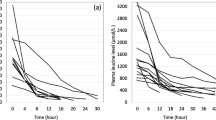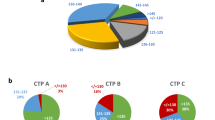Abstract.
A 2-year-old girl with carbamoyl phosphate synthetase deficiency underwent emergency hemodialysis (HD) for treatment of acute life-threatening hyperammonemia. HD was performed via catheters placed in each femoral vein serving as vascular access. The tip of one of the catheters (aspirating line) was in the left external iliac vein and the tip of the other catheter (the return line) was in the inferior vena cava (IVC). High blood flow rates were used in order to rapidly lower the blood ammonia (NH3) levels. However, unanticipated marked recirculation in the IVC, between the dialysis aspirating and return catheters, was encountered, preventing significant reduction in blood NH3. The recognition of this problem, suggested solutions, and prevention are described.
Similar content being viewed by others
Author information
Authors and Affiliations
Additional information
Received August 27, 1997; received in revised form and accepted February 4, 1998
Rights and permissions
About this article
Cite this article
Vats, A., Kashtan, C., Tuchman, M. et al. Hemodialysis catheter placement and recirculation in treatment of hyperammonemia. Pediatr Nephrol 12, 592–595 (1998). https://doi.org/10.1007/s004670050512
Issue Date:
DOI: https://doi.org/10.1007/s004670050512




